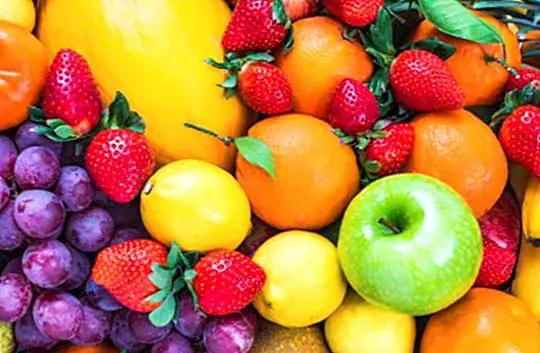How much the fruit fattens: which ones have more calories?
The fruits They are healthy foods that provide our bodies with vitamins, minerals and most of the essential nutrients that our body needs to function correctly (as is the case, for example, with antioxidants or their high fiber content).
In fact, they become a fundamental food group within a healthy and balanced diet, thanks especially to its richness in vitamins, minerals, antioxidants and other essential nutrients for our health in general and for our organism in particular.

Let's not forget that many nutritionists recommend the consumption of between 3 to 5 pieces of fruit every day, since their consumption is essential to enjoy a balanced diet, a healthy diet and ultimately good health.
Generally they stand out for being low in calories and without contributing only fats, although it is true that there is a group of fruits that, due to their caloric content, tend to get fatter than others. These fruits stand out because for their composition they contribute a greater number of calories, in addition to which their glycemic index tends to vary (as it is the case of the grapes, for example).
Therefore, to the question how much weight the fruit, we must take into account from the start that the fruit is fattening like any other food: the difference is that the vast majority does not provide as many calories, and they stand out above all for their very low fat content.
How many calories do fruits give us?
To know how much the fruit fattens, we can pay special attention to its caloric content:
Avocado | 223 kcal (23.3 g of fats) | ||
Apricot | 46 kcal | ||
Blueberry | 87 kcal | ||
Khaki | 64 kcal | ||
Cherry | 60 kcal | ||
Custard apple | 81 kcal | ||
Red plum | 50 kcal | ||
Yellow plum | 57 kcal | ||
Clementines | 45 kcal | ||
Coconut | 300 kcal (36 g of fat) | ||
Raspberry | 32 kcal | ||
Strawberries | 34 kcal | ||
Passion fruit | 17 kcal | ||
Pomegranate | 72 kcal | ||
Red currant | 39 kcal | ||
Cherry | 50 kcal | ||
FIG | 66 kcal | ||
Kiwi | 50 kcal | ||
Lime | 20 kcal | ||
Lemon | 40 kcal | ||
Tangerine | 38 kcal | ||
Mango | 61 kcal | ||
Apple | 52 kcal | ||
Passion fruit | 52 kcal | ||
Peach | 39 kcal | ||
Cantaloupe | 25 kcal | ||
Quince | 29 kcal | ||
Blackberries | 39 kcal | ||
Orange | 45 kcal | ||
Nectarine | 44 kcal | ||
Medlar | 45 kcal | ||
Papaya | 27 kcal | ||
Pear | 45 kcal | ||
Picotas | 59 kcal | ||
Pineapple | 57 kcal | ||
Banana | 82 kcal | ||
Grapefruit | 43 kcal | ||
Watermelon | 20 kcal | ||
White grape | 62 kcal | ||
Muscatel grape | 70 kcal | ||
Black grape | 60 kcal |
As we have indicated in the table above, we can say that the fruits that fatten the most are avocado, banana, coconut and grapes (in the latter case because of its high glycemic index).

Which are the fruits that more fatten?
There are certain fruits whose caloric and fat content is relatively low. Highlights in this regard fruits such as apples, oranges, tangerines, grapefruit, strawberries, lemons and watermelons. This means that, for every 100 grams, they contribute only between 40 to 90 calories.
However, if we are facing fruits that more fatten, we should keep in mind pieces of fruit like avocado, banana, coconut Y grapes.
As far as coconut and avocado are concerned, they have very few carbohydrates, but nevertheless they do have a high amount of fats, so they become hypercaloric fruits. Although, yes, we must bear in mind that we are facing healthy fats, so its consumption is always recommended since it helps us to take care of our cardiovascular health.
In the case of grapes, or banana, they stand out because they are fruits with a high content of carbohydrates, so they provide energy but also enough calories.

How to eat the fruits that fatten the most
Taking into account that obviously there are fruits that get fat, but above all all fruits are healthy, the key is in not exceed the consumption of pieces of fruit with some fat content, Y combine its consumption with lighter fruit. This article is published for informational purposes only. You can not and should not replace the consultation with a Nutritionist. We advise you to consult your trusted Nutritionist. ThemesCalories of food


